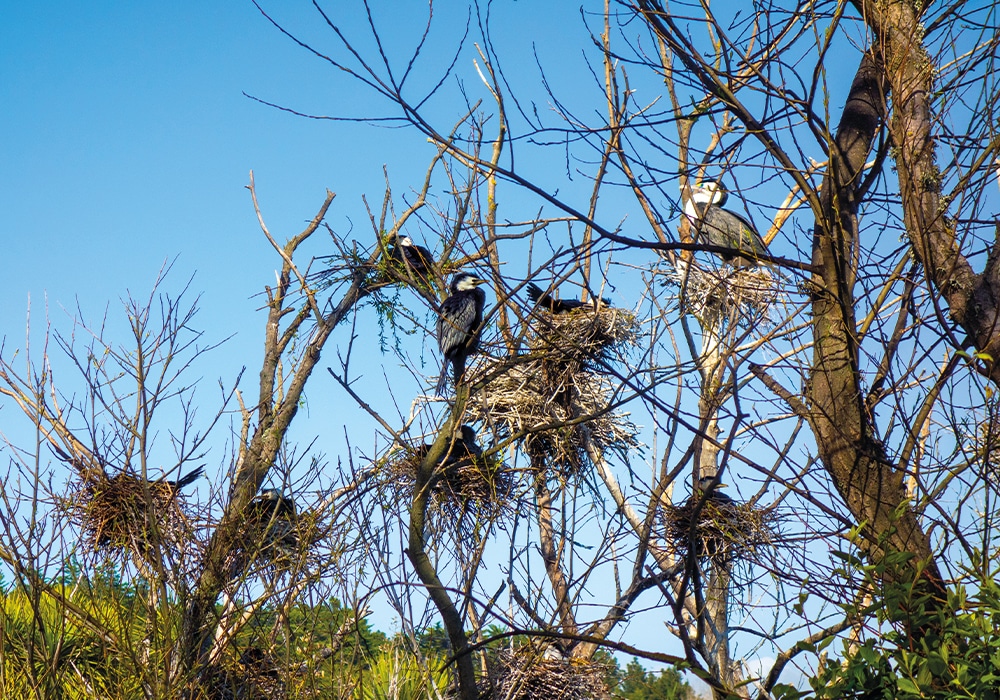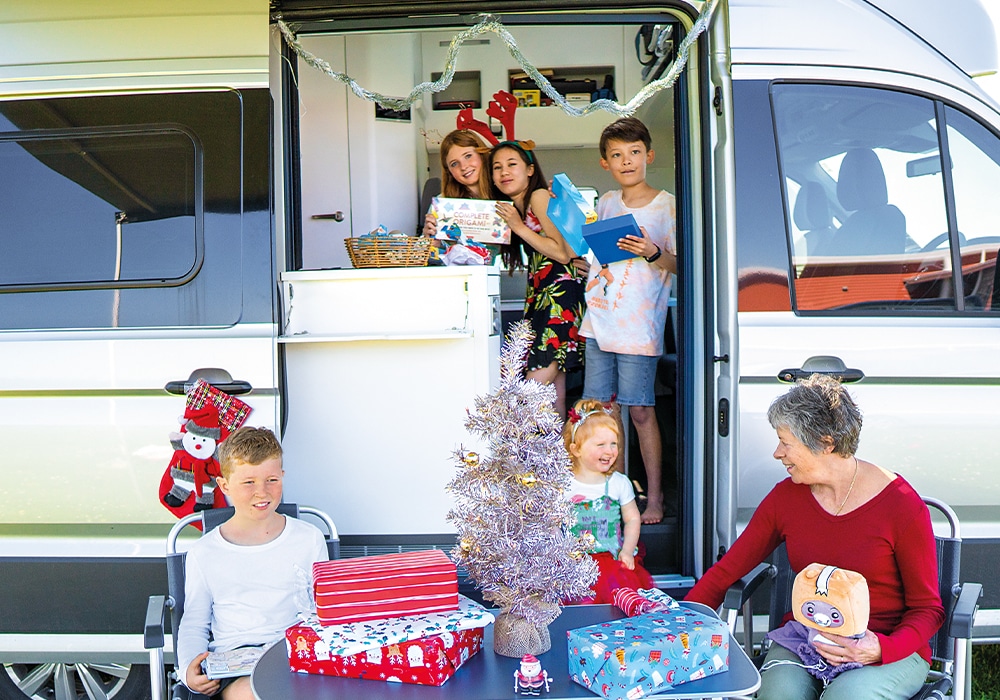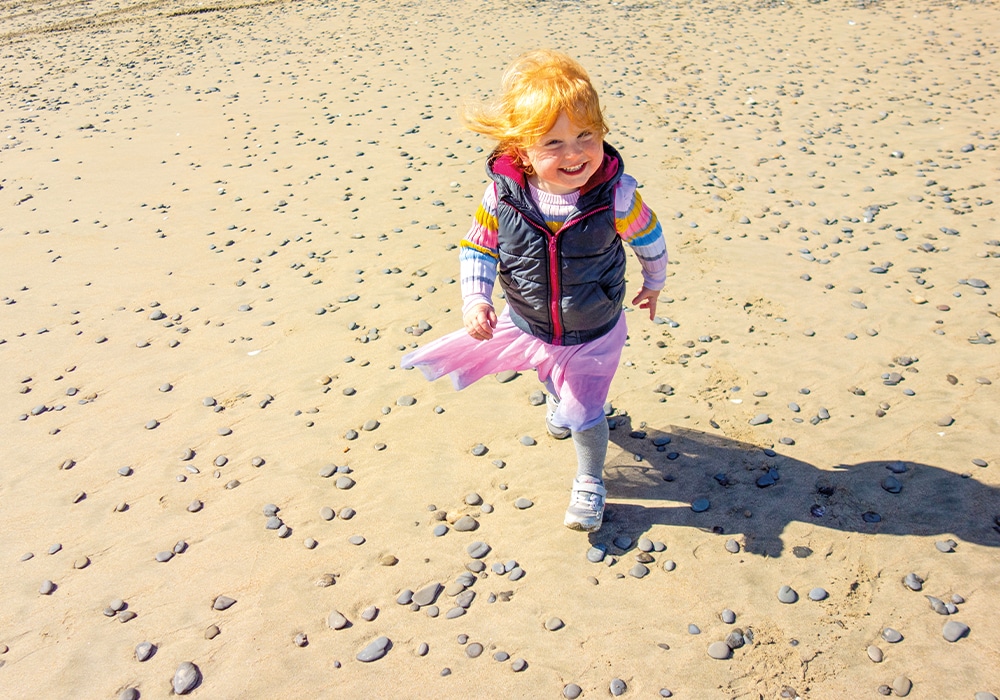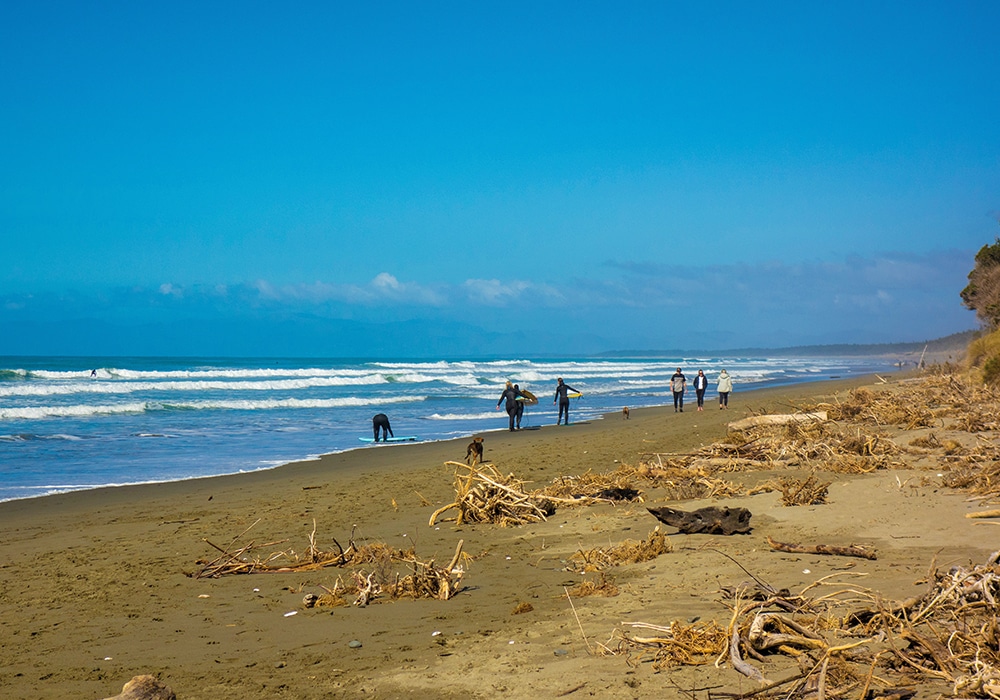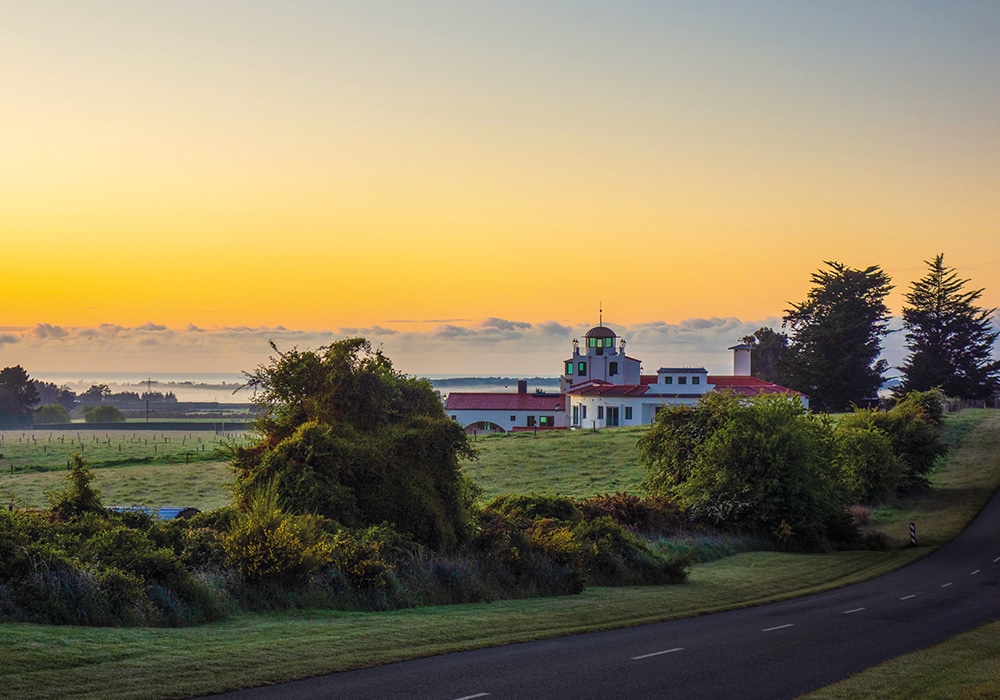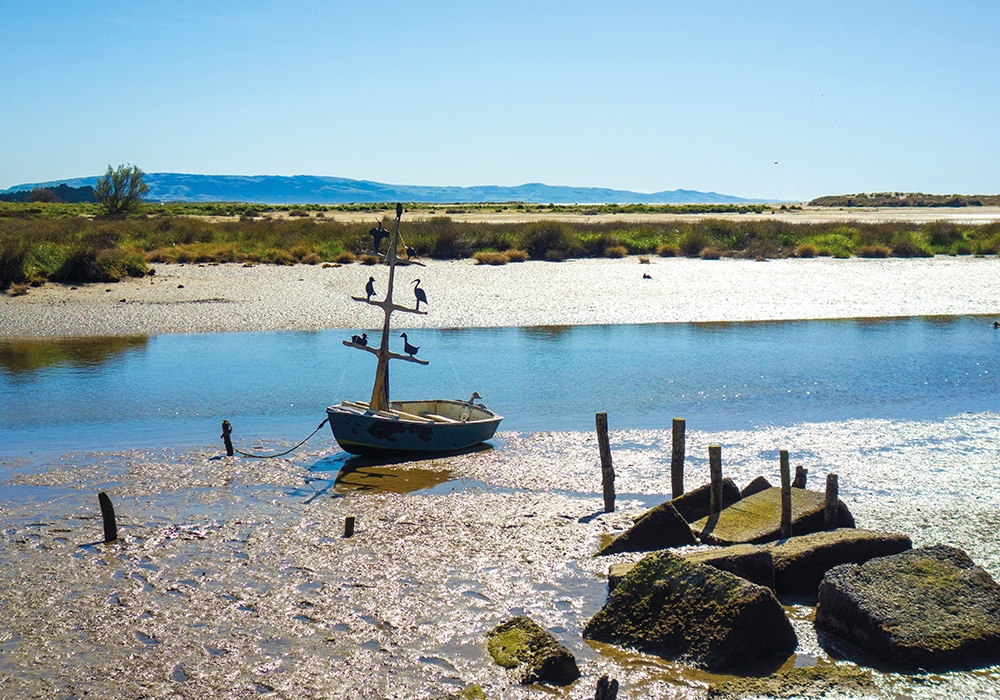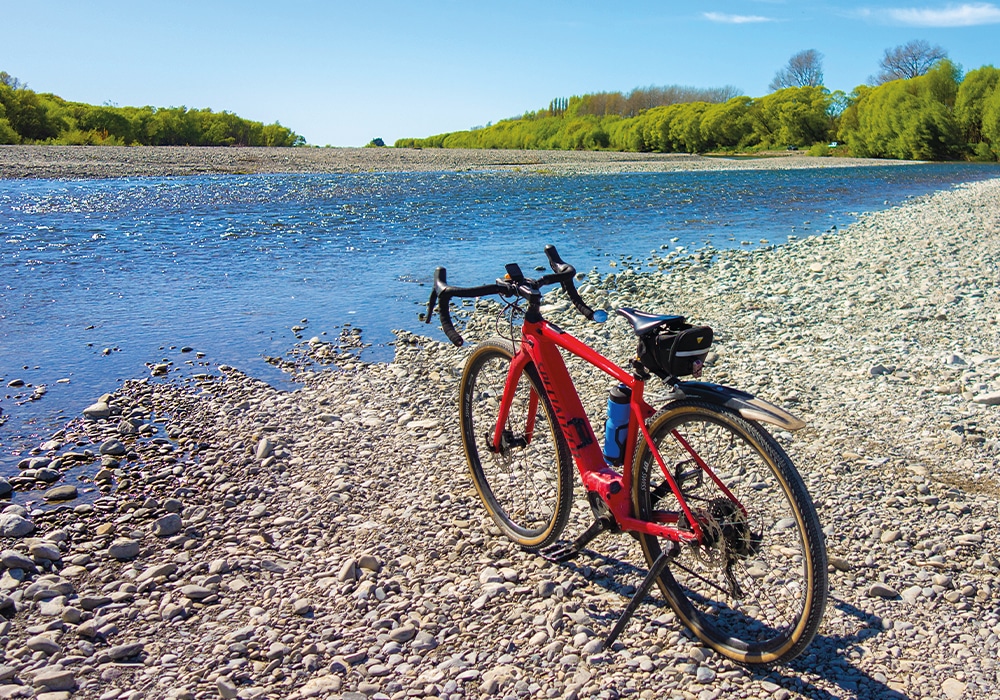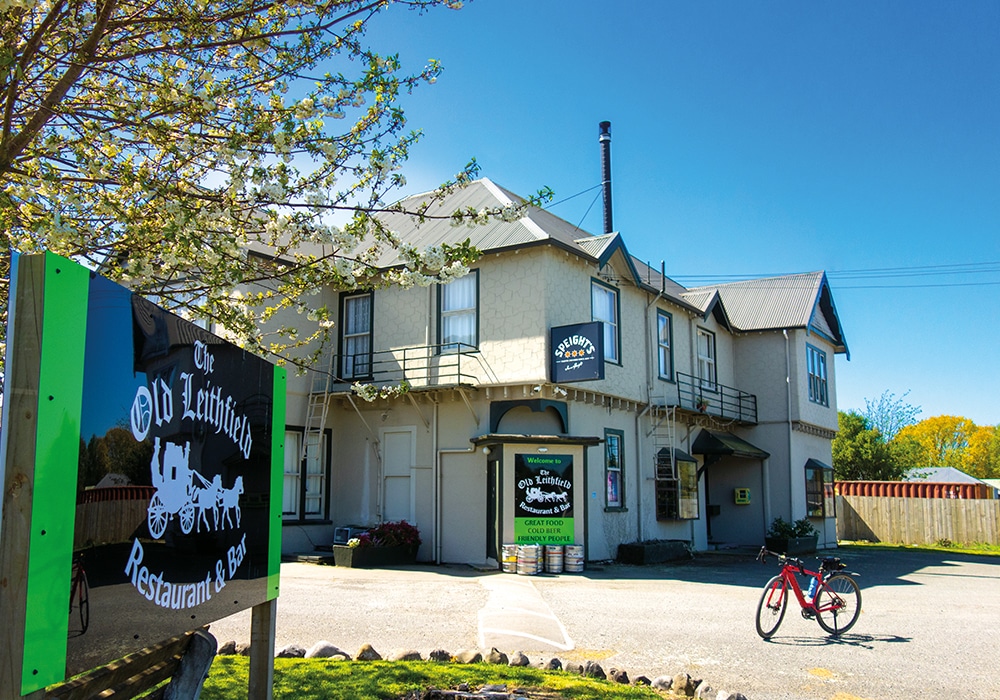Paul Owen finds Christmas in a campervan means plenty of family time, loads of fun – and there’s some welcome provision for that much-needed peace and quiet time too!
Christmas usually involves a gathering of the ‘tribe’. So having a campervan to take along can make your attendance at the annual family Christmas event easier. You get to sleep in your own bed, use your own bathroom, have your own space to retire to, and the grandkids always think that being able to sleep atop some wheels is cool. Turning up for Christmas in a campervan might even become a gateway for passing on some of your adventurous spirit on to them.
Some family members may feel inspired to camp alongside the van, as a pair of our pre-teen granddaughters did when we showed up. One encouraged our son, her dad, to park his Toyota Land Cruiser next to our van. They then quickly emptied it of the discarded takeaway wrappers and gave it a good sweep out, before folding up the rear seats and placing a couple of squabs on the floor. Some creative decorating with fairy lights, pillows, and bedding, and they were cosy as, their privacy already assured by the Toyota’s tinted windows. We never heard a peep out of them during the night.
Seems they slept in there as well as we did in our camper. Bringing the van along also means that you turn up with some extra furniture as well as an extra lounge room. The former adds extra seats and a table round the yuletide barbecue, while the latter provides a quiet space where those weary of pre-teen gabble and toddler tantrums can find peaceful sanctuary. You can also get right into the spirit of Christmas secure in the knowledge that you don’t have to drive anywhere to get home.
Borderland life
This time around, the gathering place for the Owen/McGimpsey/Leniston clan – a curious mix of Irish, fifth generation Chinese Kiwi, and English genes – was our son’s new lifestyle property near Sefton, North Canterbury. It’s located close to the border between the Hurunui and Waimakariri districts, and the village of Leithfield is also nearby, while the Balcairn town hall is the closest community gathering place and that locale’s cemetery, chock full of history, is the closest final resting place. Any road map will show Balcairn as the centre of the area as surrounding roads all use it as their hub, wheeling out in every direction like spokes.
Which means that of the towns mentioned so far, Balcairn was established first. It was also the seat of the former Kowai County Council, which once administered the area between the Ashley and Waipara rivers and from the summit of Mount Grey to the east coast. Confused? So were we, when it came to accurately describing the location of our son’s property. We settled in our camper, under some pressure from younger family members, for Sefton, as that’s where the grandkids who live permanently on the property go to school.
Balcairn is probably the more accurate description given that the closest landmark to the property is the impressive unfinished house that the locals call ‘Balcairn Castle’. Looks like this distinctive house is finally nearing completion after decades of periodic spurts of construction given the amount of input it received from contractors, concrete trucks, and builders during our stay. It’s a project that stands out like a ‘tall poppy’ in an area full of me-too four-hectare blocks, Signature/ Landmark-style houses, and paddocks full of potential home-kill for the freezer and expensive thoroughbred horses.
Personally, I love the way the ‘castle’ looks like a 19th century lighthouse has mated with a 14th century Tuscan monastery, however, not everyone is so appreciative of its adventurous architecture. To many who live in the area, it’s an eyesore. If you’ve spent any time travelling through Europe, you’ll be aware of how scattered towns and villages grow towards each other over time and eventually merge. That’s what’s happening to these places on the Hurunui/Waimakariri border as farms get sliced up into ‘lifestyle’ properties. Stock numbers decline, school rolls grow, and an ever-expanding number of residents get to enjoy the spectacular skies of North Canterbury and the wave-swept beaches of the coastline. These are the twilight years of surrounding lifestyle property settlement for Balcairn, Sefton, Leithfield, Amberley, Ashley, Woodend, Waikuku, and Pegasus. The clock of progress is marking their time before they get swallowed up by the rapid growth of Rangiora, the dominant town of Waimakariri District that’s well on its way towards becoming a city.
The Hurunui and the Waimakariri might be the major rivers that now define the boundaries where our son and his family now live, but the area boasts several more that dissect its rolling hills and terraced plains – the Ashley, the Kowai, and the Waipara. Each bring riches from opposite directions – granite stones and fertile silt from the mountains and plains to the west, and the milky flows of whitebait entering them from the east with each rising spring tide.
Riverland Revelry
The Ashley River was named after an obscure British official but has a far more poetic name in Maori – Rakahuri – which means ‘sky turned round’. As part of the 1998 Waitangi treaty settlement with Poutini Ngai Tahu, the river is now officially called the Ashley/Rakahuri. Pity they didn’t fully drop the name of the minor governor of an early British colony in South Carolina from the nomenclature so that Rakahuri could be put on the same footing as other great Canterbury rivers such as the Waimakariri and Rakaia. It fully deserves to bask in the same mana.
‘Sky turned round’ is not fully accurate, as the Rakahuri mostly flows in swift surges down braided channels across a wide bed of granite rock and stones. This gives little opportunity for reflection along most of its 65km journey from the Lees valley, near Oxford, to its exit into the Pacific Ocean at Waikuku. The first part of the river flows rapidly through a canyon near its source, Ashley gorge, and it’s well worth the 38km drive to get there from Rangiora. Where the name really fits is at the wide estuary that it forms near the mouth at Waikuku. Here you can sit and enjoy some excellent views of the skyscape, usually along with plenty of sightings of shags, blue herons, pied stilts, southern black-backed gulls, and other birds.
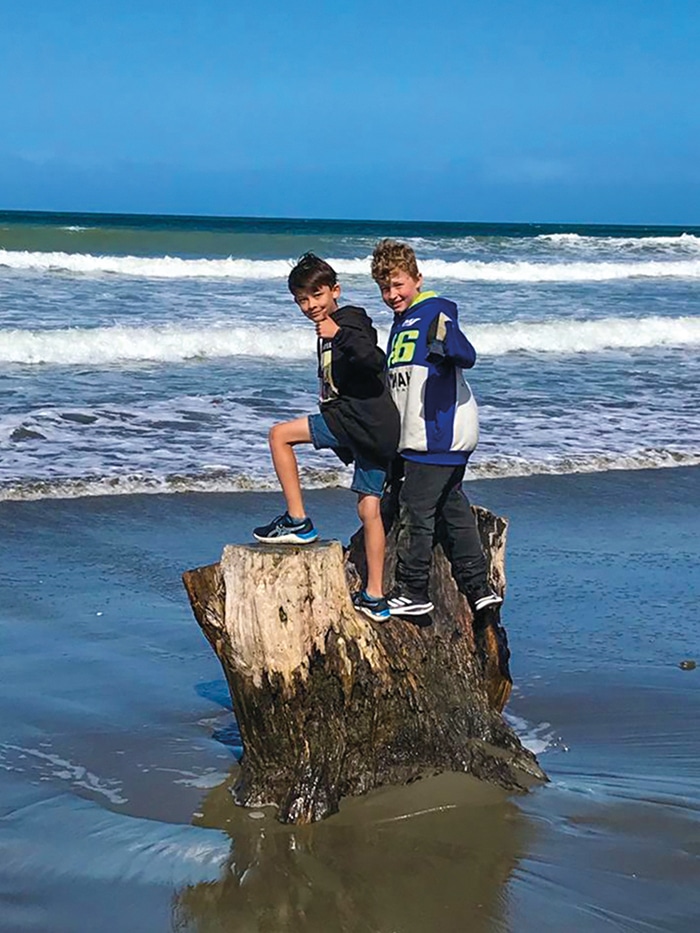
That estuary and the surf beach beyond quickly became our go-to place anytime the grandkids got totally bored with lifestyle property life. A quick drive to Waikuku Beach, where they could fully release their youthful pent-up energies always sorted them out.
Another part of the Rakahuri was also popular – the section of the river from the comparatively new bridge at Cones Road, on the approaches to Rangiora, to the railway bridge some 3km further east. Both bridges, one built in 2015 and one constructed in 1961, replaced bridges that were built in 1897 and 1875, and if you scan the riverbanks closely you can still see traces of the 19th Century crossings. Not that the grandkids were keen to take a closer look. They were too busy building rock dams to slow Rakahuri’s mighty flow or exercising the dog.
The Kowai River, a little further north, also provides opportunities for recreation. There are swimmable water holes near where the ford on Marshman’s Road crosses it, and it eventually meets the sea near Leithfield. A shady track leads from the sleepy village along the river, crossing busy State Highway One through a handy underground culvert to the coast.
The beach is steep and stony, with river gravel heaped by the waves into large evenly spaced mounds. Skim-boarders might be tempted to try their luck, running down the beach, tossing their boards ahead into the surf, then jumping on them to crash into oncoming waves head on and perform spectacular displays of aerial machismo. None were so brave on our visit.
Farewell Barbie
With the grandkids from Wellington already having returned to the capital (Christchurch Airport is only a 40-minute drive away), we could all now squeeze into two four wheel drive vehicles, for a drive up the coast to the northern end of Amberley Beach for a barbecue at a magical place the locals call White Rock.
The sandstone here is more ochre coloured than white, and is layered into formations of varying hardness. This means that the softer layers weather and crumble into sand at their exposed edge, leaving the harder ones suspended above them to form roof-like landforms that look like slabs of concrete. As you enter the gap between the two, you instantly know that this was a natural shelter for Māori, and possibly the Moriori who preceded them.
With a near gale-force northeaster blowing, the lee side of White Rock was the perfect place for a wonderful farewell BBQ before the rest of our family scattered. Soon, we’d be back in the campervan, going where whims and writing assignments would take us, missing and not missing the grandkids at the same time.
Five Must-Do when in former Kowai County
1. Walk or cycle along the banks of the Ashley/Rakahuri River – there’s a quiet, rideable track all the way to the river mouth at Waikuku.
2. Visit the Balcairn Archives full of historic records and photographs in the beautiful old Kowai County Council building. For more info, email kowai.archives@gmail.com
3. Eat a pub lunch at either the Leithfield or Sefton pubs – sunny garden areas await at both.
4. Cycle the Hurunui Heartland Trail – it might stick to roads all the way but they’re virtually devoid of traffic and offer great views.
5. Witness the iconic Ashley Forest Rallysprint – held each September, this motorsport event attracts a large crowd and always puts on a spectacular show.
Places to Stay
• Rangiora Eco Holiday Park: basic facilities, attractive pricing.
• Waikuku Beach Holiday Park: perfectly placed for surfing, fishing, and cycling.
• NZMCA park-over properties: there are plenty to choose from in locations such as Amberley, Waikuku Beach, and next to the Rakahuri river.
• Leithfield Beach Holiday Park: fully equipped and you can bring a small dog by prior arrangement.
• Amberley Beach Camping Ground: Honesty box payment facilities, beautiful location, run by the motorhome-friendly Hurunui District Council.
